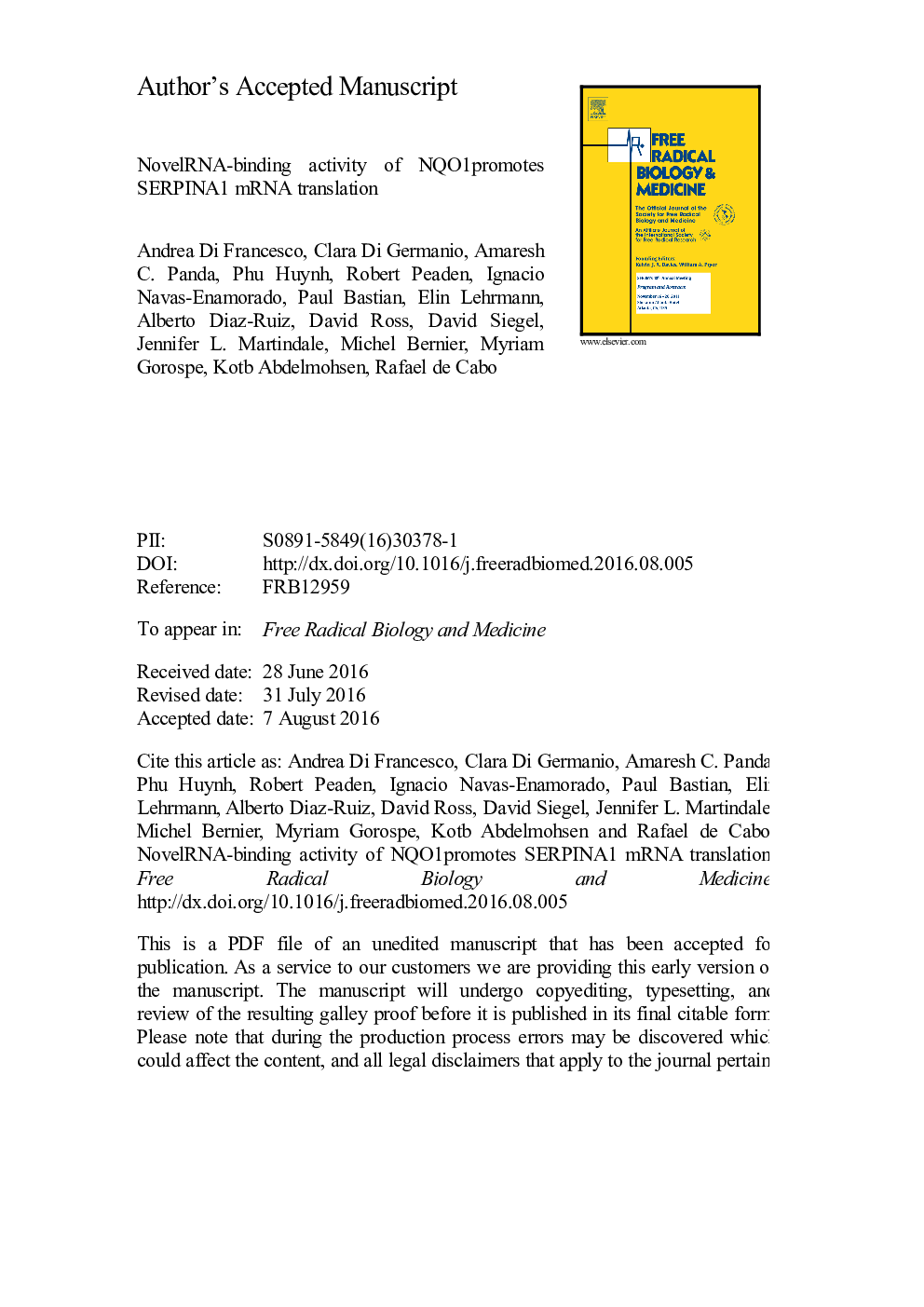| Article ID | Journal | Published Year | Pages | File Type |
|---|---|---|---|---|
| 8267319 | Free Radical Biology and Medicine | 2016 | 22 Pages |
Abstract
NAD(P)H: quinone oxidoreductase (NQO1) is essential for cell defense against reactive oxidative species, cancer, and metabolic stress. Recently, NQO1 was found in ribonucleoprotein (RNP) complexes, but NQO1-interacting mRNAs and the functional impact of such interactions are not known. Here, we used ribonucleoprotein immunoprecipitation (RIP) and microarray analysis to identify comprehensively the subset of NQO1 target mRNAs in human hepatoma HepG2 cells. One of its main targets, SERPINA1 mRNA, encodes the serine protease inhibitor α-1-antitrypsin, A1AT, which is associated with disorders including obesity-related metabolic inflammation, chronic obstructive pulmonary disease (COPD), liver cirrhosis and hepatocellular carcinoma. Biotin pulldown analysis indicated that NQO1 can bind the 3' untranslated region (UTR) and the coding region (CR) of SERPINA1 mRNA. NQO1 did not affect SERPINA1 mRNA levels; instead, it enhanced the translation of SERPINA1 mRNA, as NQO1 silencing decreased the size of polysomes forming on SERPINA1 mRNA and lowered the abundance of A1AT. Luciferase reporter analysis further indicated that NQO1 regulates SERPINA1 mRNA translation through the SERPINA1 3'UTR. Accordingly, NQO1-KO mice had reduced hepatic and serum levels of A1AT and increased activity of neutrophil elastase (NE), one of the main targets of A1AT. We propose that this novel mechanism of action of NQO1 as an RNA-binding protein may help to explain its pleiotropic biological effects.
Keywords
A1ATqPCRNrf2RNPSERPINA1GRBRBPNQO1keap1NAD(P)H:quinone oxidoreductase 1Small interfering RNAsiRNAα-1-antitrypsinβ-Lapachoneneutrophil elastaseChronic obstructive pulmonary diseaseCOPDImmunoprecipitationmRNA translationreverse transcriptionrenilla luciferaseribonucleoproteinnuclear factor erythroid 2-related factorantioxidant response elementsFirefly luciferaseUTR یا untranslated regions untranslated regionAREquantitative real-time polymerase chain reactionRIPRNA-binding proteinRNA binding proteinKelch-like ECH-associated protein 1growth factor receptor-bound proteinCoding region
Related Topics
Life Sciences
Biochemistry, Genetics and Molecular Biology
Ageing
Authors
Andrea Di Francesco, Clara Di Germanio, Amaresh C. Panda, Phu Huynh, Robert Peaden, Ignacio Navas-Enamorado, Paul Bastian, Elin Lehrmann, Alberto Diaz-Ruiz, David Ross, David Siegel, Jennifer L. Martindale, Michel Bernier, Myriam Gorospe,
